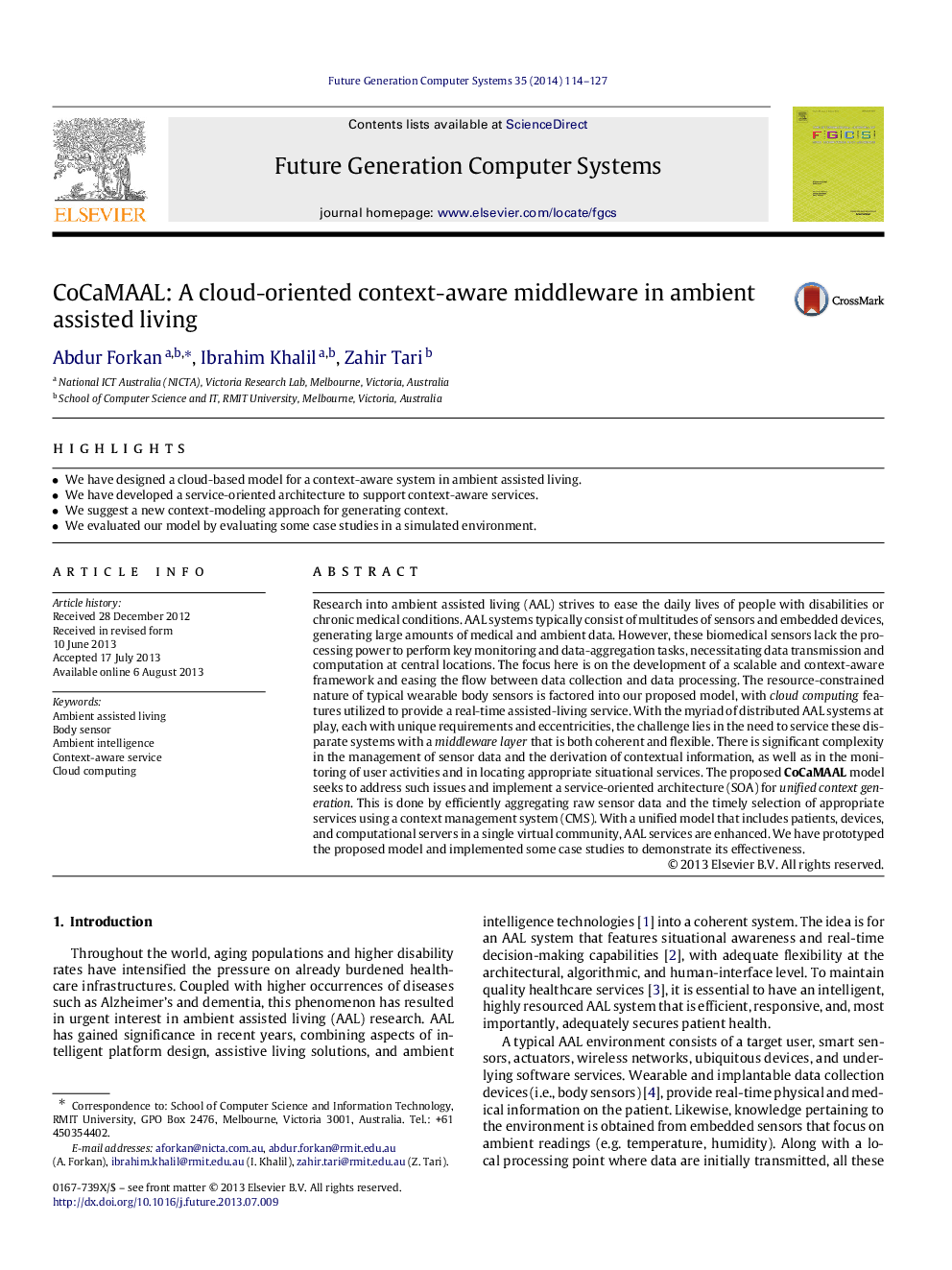| کد مقاله | کد نشریه | سال انتشار | مقاله انگلیسی | نسخه تمام متن |
|---|---|---|---|---|
| 425667 | 685809 | 2014 | 14 صفحه PDF | دانلود رایگان |

• We have designed a cloud-based model for a context-aware system in ambient assisted living.
• We have developed a service-oriented architecture to support context-aware services.
• We suggest a new context-modeling approach for generating context.
• We evaluated our model by evaluating some case studies in a simulated environment.
Research into ambient assisted living (AAL) strives to ease the daily lives of people with disabilities or chronic medical conditions. AAL systems typically consist of multitudes of sensors and embedded devices, generating large amounts of medical and ambient data. However, these biomedical sensors lack the processing power to perform key monitoring and data-aggregation tasks, necessitating data transmission and computation at central locations. The focus here is on the development of a scalable and context-aware framework and easing the flow between data collection and data processing. The resource-constrained nature of typical wearable body sensors is factored into our proposed model, with cloud computing features utilized to provide a real-time assisted-living service. With the myriad of distributed AAL systems at play, each with unique requirements and eccentricities, the challenge lies in the need to service these disparate systems with a middleware layer that is both coherent and flexible. There is significant complexity in the management of sensor data and the derivation of contextual information, as well as in the monitoring of user activities and in locating appropriate situational services. The proposed CoCaMAAL model seeks to address such issues and implement a service-oriented architecture (SOA) for unified context generation. This is done by efficiently aggregating raw sensor data and the timely selection of appropriate services using a context management system (CMS). With a unified model that includes patients, devices, and computational servers in a single virtual community, AAL services are enhanced. We have prototyped the proposed model and implemented some case studies to demonstrate its effectiveness.
Journal: Future Generation Computer Systems - Volume 35, June 2014, Pages 114–127